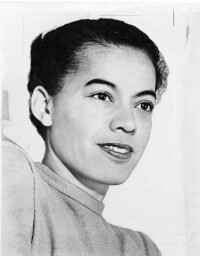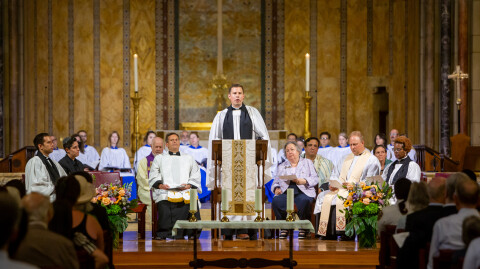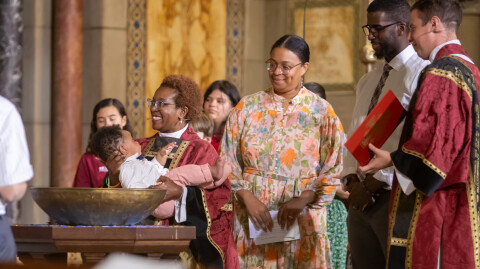 In the spring of 1957—six and half years before the March on Washington—the parish of St. Bartholomew’s had a brush with one of the most fascinating and significant figures in the history of the civil rights movement, the women’s rights movement, the LGBTQ+ rights movement, and the Episcopal Church.
In the spring of 1957—six and half years before the March on Washington—the parish of St. Bartholomew’s had a brush with one of the most fascinating and significant figures in the history of the civil rights movement, the women’s rights movement, the LGBTQ+ rights movement, and the Episcopal Church.
Pauli Murray had begun work as an associate attorney at the law firm Paul, Weiss the previous fall. One of only three attorneys identified as female and the only Black attorney period, Murray came to the firm with a much more interesting resume than those of the other associates, who were virtually all young white men. A successful organizer and activist, Murray was friends with Eleanor Roosevelt, had served as a Deputy Attorney General of California, and had written the book States’ Laws on Race and Color, which Thurgood Marshall called the “bible” of the civil rights movement. Despite Murray’s distinguished past (and her older age), Murray had come to midtown Manhattan for the same reason those young white men had: to make it as a corporate lawyer.
A few weeks after Murray arrived, the office manager of the firm, Renee Barlow, invited Murray out to lunch as a “courteous gesture to a new employee.” At some point during the lunch, Barlow uttered the phrase “the blessed company of all faithful people,” a direct quotation from the Holy Communion service of the 1928 Book of Common Prayer. Murray immediately picked up on the reference, and the two bonded over their shared Episcopalianism. Before long, they were attending weekday Lenten services at St. Bart’s during their lunch hour, walking the short distance from their office at 57th and Madison to 325 Park Avenue. Murray’s relationship with Barlow, one many scholars assume was romantic, would become the most important in Murray’s life.
Murray did not last long at Paul, Weiss. In 1960, Murray accepted a professorship in Ghana and shortly thereafter began a doctoral program at Yale Law School. Murray cofounded the National Organization for Women and Murray’s thinking greatly influenced Ruth Bader Ginsburg’s advocacy for gender equality. Eventually, Murray became a tenured professor at Brandeis. But Murray’s heart lay somewhere else. Ultimately, Murray returned to New York City, this time to study at General Theological Seminary. Murray was ordained as an Episcopal priest soon after the General Convention of the Episcopal Church officially approved the ordination of women. Murray was the first person identified as both Black and female to be ordained as a priest.
Murray was a consummate trailblazer. Murray got arrested for refusing to give up a seat on the bus decades ahead of the Montgomery Bus Boycott, successfully integrated Washington, DC restaurants years in advance of the Greensboro, NC sit-ins, and endeavored to address personal struggles with gender identity long before “transgender” was even a word. Murray was a persistent “problem,” constantly challenging accepted ways of thinking and never displaying all that much satisfaction with the status quo. (At The Forum this Sunday morning, Professor Anthony Pinn of Rice University will share “Lessons from Pauli Murray on Being a Problem.” I hope you’ll join us.)
 I don’t know whether Murray and Barlow ever returned to St. Bart’s after Lent 1957 or if Murray’s brief visits to St. Bart’s actually influenced Murray’s sense of vocation or the trajectory of Murray’s career. But I am heartened by the fact that Murray once sat in the sanctuary in which I now spend so much time. If St. Bart’s played even the slightest part in helping Murray to become a “problem” for the forces of injustice and oppression in our world, perhaps it can teach me how to become a useful “problem,” too.
I don’t know whether Murray and Barlow ever returned to St. Bart’s after Lent 1957 or if Murray’s brief visits to St. Bart’s actually influenced Murray’s sense of vocation or the trajectory of Murray’s career. But I am heartened by the fact that Murray once sat in the sanctuary in which I now spend so much time. If St. Bart’s played even the slightest part in helping Murray to become a “problem” for the forces of injustice and oppression in our world, perhaps it can teach me how to become a useful “problem,” too.



